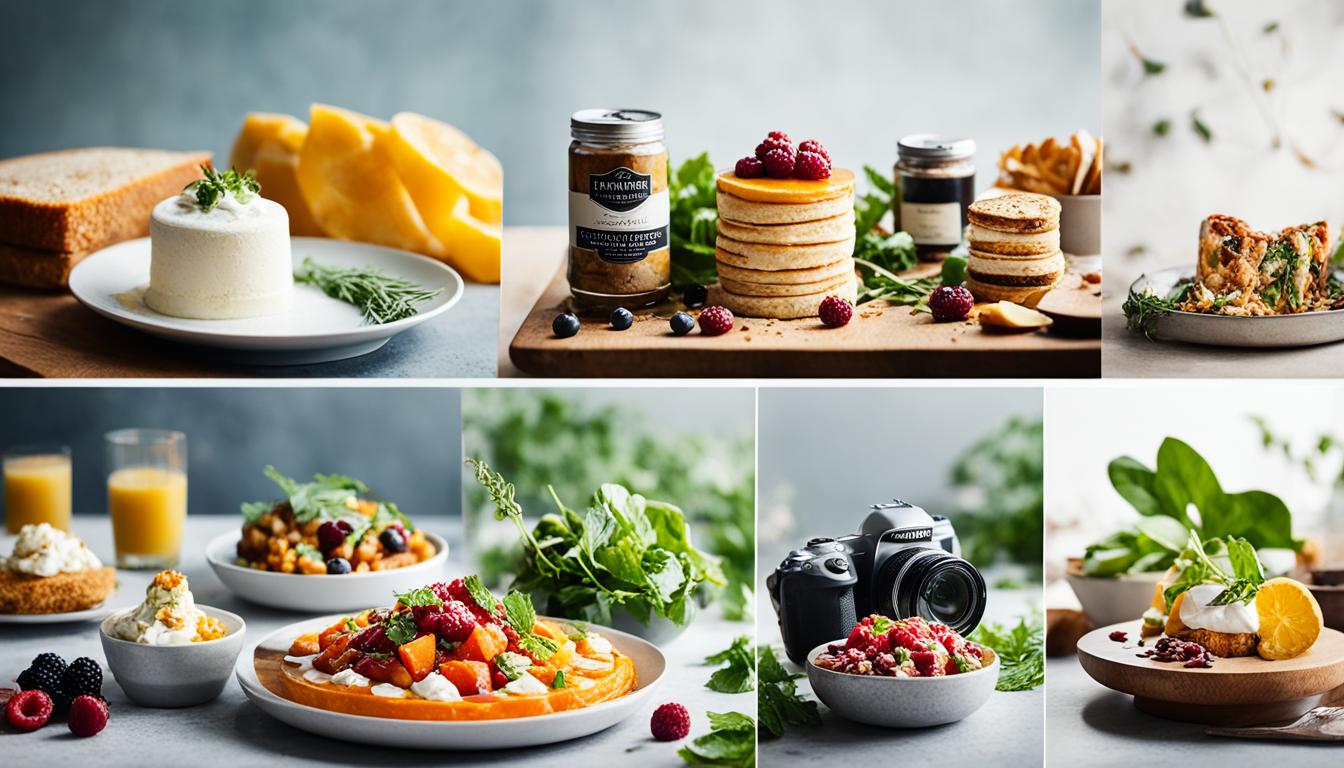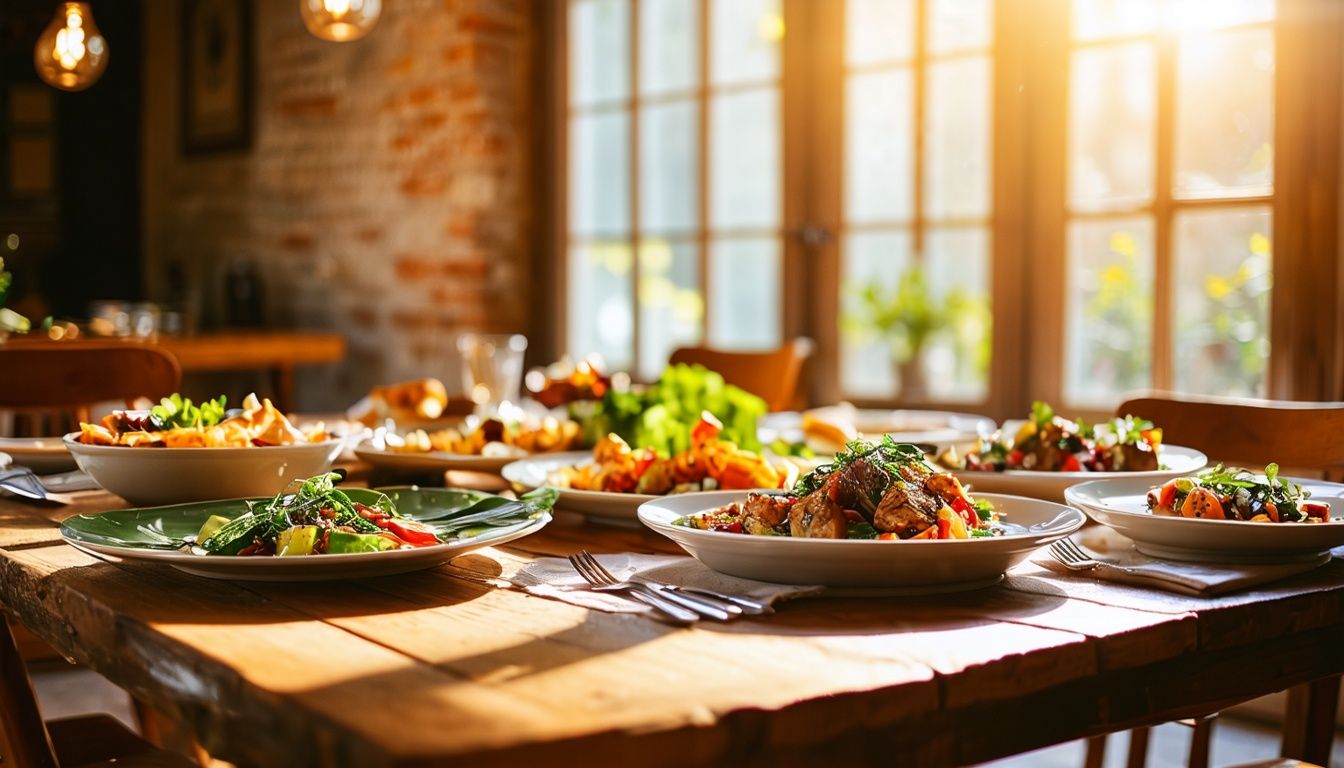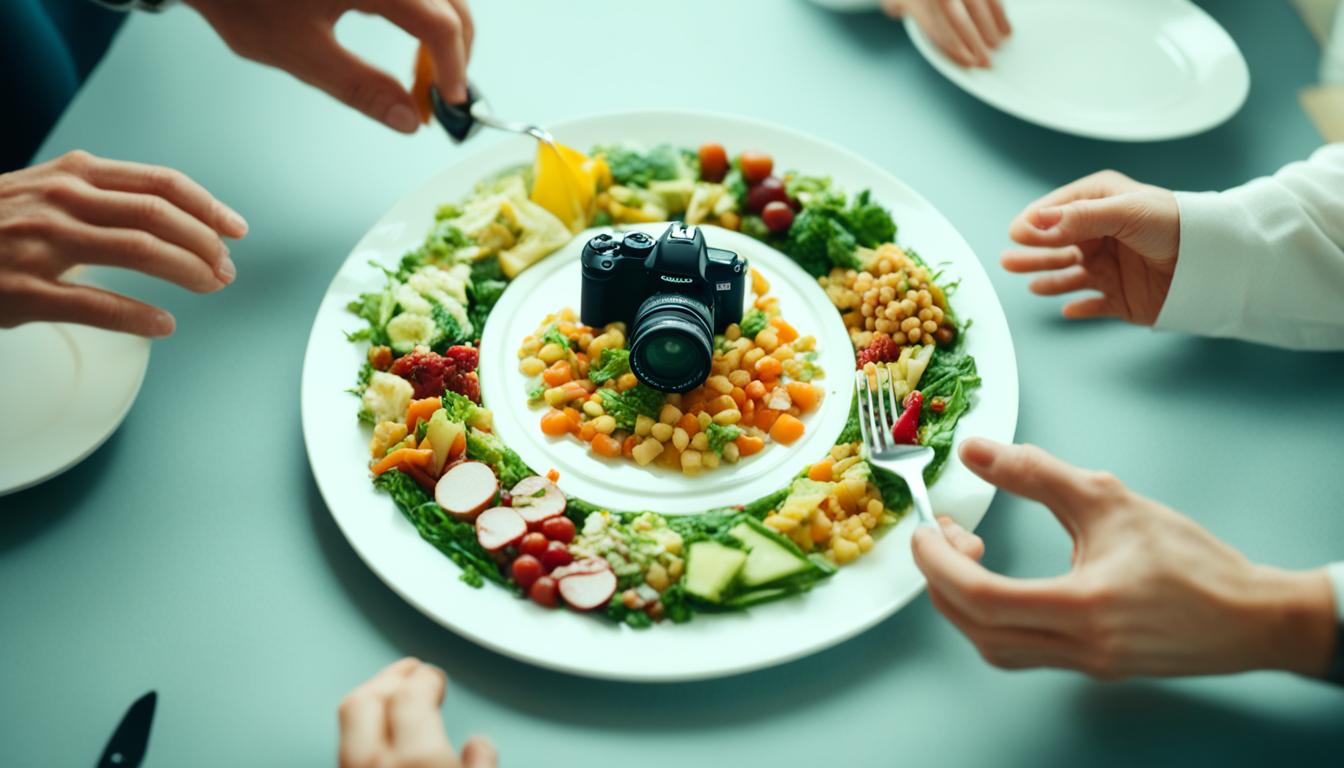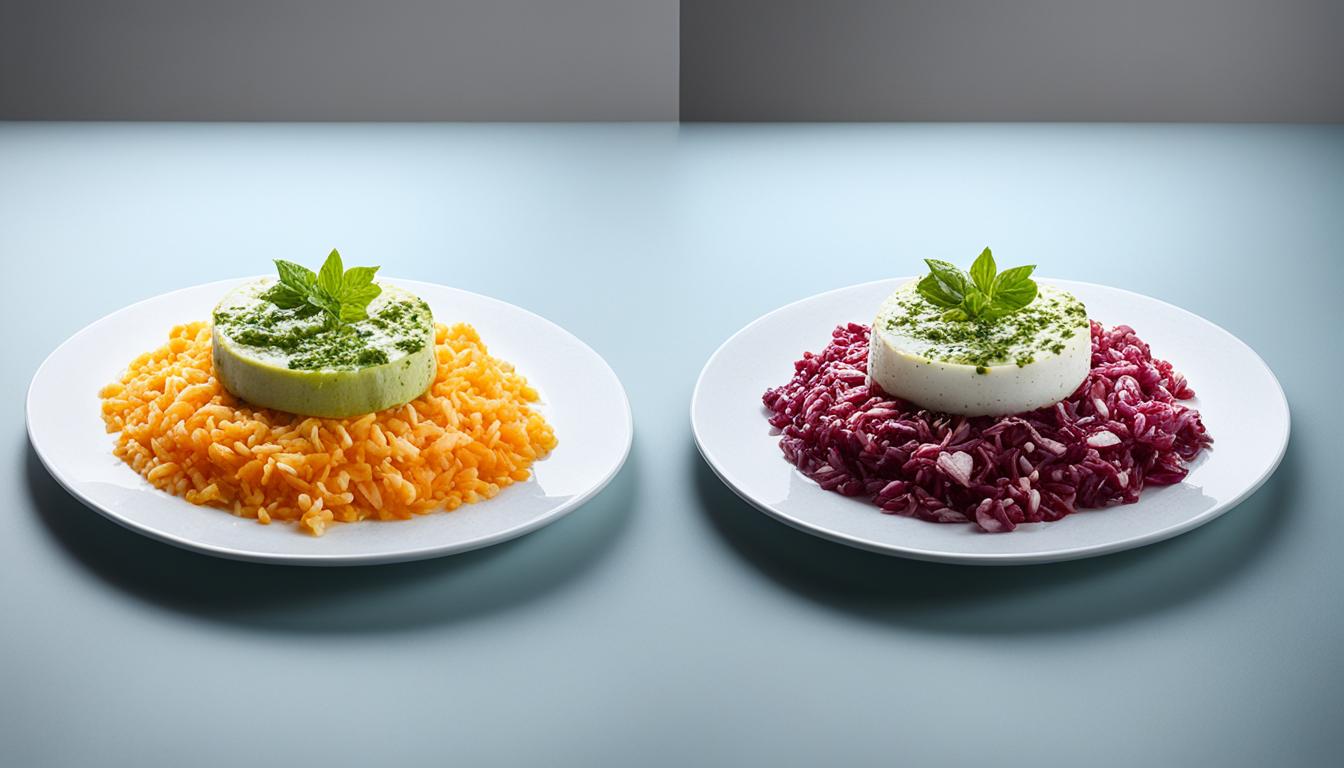When it comes to food photography, finding clients and pricing your work can be a challenging task. Unlike other forms of photography, there is no one-size-fits-all formula for determining the rates in the world of food photography. Various factors, such as the type of client and the usage of images, come into play.
Understanding the different types of clients in the food photography industry is crucial. You may work with restaurants, cafes, bars, eCommerce websites, and more. Additionally, there are two main categories of clients: client direct and agency work. Each type of client comes with its own pricing considerations, so it’s essential to have a clear understanding of the job requirements and usage rights for each project.
Key Takeaways
- When determining pricing for food photography, consider factors such as the type of client, usage rights, and job requirements.
- Client direct work involves working directly with the end client, such as restaurants and cafes, while agency work is with ad agencies and design firms.
- Smaller clients may have limited budgets, while agency clients often have larger budgets and higher expectations.
- Pricing considerations for client direct jobs should reflect the client’s size, usage rights, and your expertise and expenses.
- Agency work often requires a higher level of expertise and professionalism, resulting in higher day rates.
Types of Clients in Food Photography
When it comes to food photography, there are two main types of clients: client direct and agency work. Understanding the dynamics and pricing considerations of each type is crucial for success in this industry.
Client Direct
Client direct refers to working directly with the end client, such as restaurants, cafes, coffee shops, retailers, and food manufacturers. These clients may have a smaller budget and may not be familiar with the intricacies of food photography. However, they value high-quality imagery to showcase their products and menus. Building strong relationships with client direct customers can lead to long-term collaborations and word-of-mouth referrals.
Agency Work
On the other hand, agency work involves collaborating with ad agencies, design firms, PR firms, and social media companies. These clients typically have larger budgets and higher expectations since the images will be used for advertising purposes. They require top-tier visuals to effectively promote their brands. Working with agencies offers opportunities to network and access higher-profile projects.
To illustrate the differences between client direct and agency work in food photography, here’s a comparison table:
| Client Direct | Agency Work |
|---|---|
| Smaller budget | Larger budget |
| Less familiar with food photography | Expect high-quality imagery |
| Build long-term relationships | Potential for higher-profile projects |
Having a mix of both client direct and agency work can provide stability and diversity to your food photography business. It’s essential to adapt your pricing, communication, and delivery to meet the specific needs of each type of client.
Pricing Considerations for Client Direct Jobs
When it comes to pricing client direct jobs in food photography, there are several important factors to consider. These include the size of the client, the type of usage for the images, and the client’s budget. Let’s take a closer look at each of these considerations.
Client Size
The size of the client plays a significant role in determining the pricing for a food photography project. Smaller clients with limited budgets may require more guidance and education about the costs and process of food photography. As a photographer, it’s important to communicate clearly and set realistic expectations with these clients, ensuring that they understand the value of your work.
Usage Rights
Another crucial factor in pricing client direct jobs is determining the usage rights for the images. Will the images be used for a menu, a website, or advertising purposes? The type of usage will have an impact on the pricing structure. For instance, images used in advertising typically have a higher value and may require additional licenses and fees. It’s important to have a clear understanding of how the images will be used and to price accordingly.
Client Budget
Understanding the client’s budget is essential when determining the pricing for a food photography project. While smaller clients may have limited budgets, larger clients may be able to invest more in quality images. As a photographer, it’s important to find a balance between meeting the client’s budgetary constraints and ensuring that your expertise and expenses are appropriately compensated.
By taking into account these pricing considerations, you can establish fair and reasonable rates for client direct jobs in food photography. Remember, each project is unique, and it’s essential to have open and transparent communication with the client throughout the process to ensure a successful outcome.

Pricing Considerations for Client Direct Jobs
| Consideration | Explanation |
|---|---|
| Client Size | Determine if the client is small or large and adjust pricing accordingly. |
| Usage Rights | Understand how the client plans to use the images and price accordingly. |
| Client Budget | Take into account the client’s budget when determining pricing for the project. |
Pricing Considerations for Agency Work
When it comes to food photography, agency work often requires a higher level of expertise and professionalism. The clients seeking agency services are typically larger companies with bigger budgets, looking to create high-quality images that will help sell their products. As food photographers, we must carefully consider various factors when pricing agency work.
The first consideration is the scope of the project. Agency clients often have specific requirements and expectations, which may involve extensive planning, styling, and post-production work. It is crucial to thoroughly understand the client’s vision and deliver exceptional results that align with their brand and objectives.
Next, we need to take into account the usage rights for the images. Agencies typically require broad usage licenses to utilize the photographs across various platforms, including print, digital, and social media. This expansive usage places greater value on the images and justifies higher pricing.
Additionally, the level of expertise and production required for agency work should be factored into the pricing. With the expectation of exceptional quality and professional execution, photographers need to invest in top-notch equipment, props, and studio resources. These factors contribute to the overall cost of the project.
Day rates for agency work are generally higher compared to client direct jobs. This is because agency clients tend to use the images more extensively for advertising campaigns, requiring multiple shots and variations. The higher rates also reflect the expertise and specialized skills demanded by agencies.
In summary, pricing considerations for agency work in food photography involve carefully assessing the scope of the project, usage rights, level of expertise, and production requirements. By delivering outstanding images that meet the unique needs of agency clients, we can establish ourselves as valuable partners in their marketing efforts.
Pricing Considerations for Different Types of Food Photography Jobs
When it comes to pricing food photography jobs, it’s essential to consider the specific requirements and nuances of each type of project. Different types of food photography, such as editorial, commercial, advertising, publishing/cookbook, and photos for web, have their own unique considerations that should be taken into account when determining pricing. Let’s explore the pricing considerations for each of these types of food photography jobs:
Editorial Photography
For editorial photography, pricing can vary depending on factors such as the size and type of publication and the role of the image within the publication. Featured images may command a higher price compared to filler pieces. The reach and reputation of the publication can also influence the pricing structure.
Commercial Photography
Commercial photography involves working with clients for their commercial use, such as product packaging or marketing materials. When pricing commercial jobs, it’s important to consider the creative fee, shoot expenses, and usage license for the images. Commercial clients often require professional-quality images that effectively showcase their products or services.
Advertising Photography
Advertising photography requires a higher level of expertise and branding. Pricing for advertising photography should reflect the value of the images in promoting the client’s products and services. The reach and impact of the advertising campaign, as well as the level of production and creativity involved, can influence the pricing structure.
Publishing/Cookbook Photography
Publishing or cookbook photography typically involves larger project scopes, such as capturing images for an entire book or cookbook. Pricing can be determined for the entire project, considering factors such as the number of images required, the level of customization, and the time and effort invested in the project. Composing visually appealing and enticing images is crucial for cookbook photography.
Photos for Web
When pricing photos for web use, it’s important to consider the client’s specific needs and budget. This may involve offering package rates or per-shot pricing options. Photos for web use can include images for websites, blogs, social media, or online advertising. Understanding the client’s goals and requirements will help determine the appropriate pricing structure.
Understanding the unique considerations for each type of food photography job is essential for accurately pricing your work. By tailoring your pricing strategy to the specific needs and expectations of clients in different sectors, you can ensure fair compensation for your expertise and create a sustainable food photography business.

| Food Photography Job Type | Pricing Considerations |
|---|---|
| Editorial Photography | Varying rates based on publication size and type, image role |
| Commercial Photography | Consideration of creative fee, shoot expenses, and usage license |
| Advertising Photography | Pricing reflective of branding value and campaign reach |
| Publishing/Cookbook Photography | Pricing determined for entire project scope and customization level |
| Photos for Web | Package rates or per-shot pricing based on client’s needs and budget |
Conclusion
Pricing your food photography work and finding clients in this industry can be a complex process. It requires careful consideration of various factors such as client type, job requirements, usage rights, and your own expertise and expenses. The key to success lies in clear communication, setting realistic expectations, and delivering a high level of professionalism and quality in your work.
As you navigate the world of food photography, it is important to continually assess and adjust your pricing structure to ensure it aligns with the value you provide and the market standards. Remember, every client is different, and their budgets and needs may vary. Adapt your pricing accordingly and offer tailored packages that meet their requirements.
In addition to pricing, finding clients is crucial for establishing and growing your food photography business. Utilize various marketing channels such as social media, online portfolios, and networking to showcase your skills and attract potential clients. Additionally, consider collaborating with local businesses, attending food-related events, and reaching out to food bloggers and influencers.
When it comes to food photography, there are no shortcuts. It takes time, effort, and dedication to develop your skills and build a reputable brand. Stay updated with the latest food photography trends and techniques, invest in quality equipment, and continuously refine your craft. With the right approach and determination, you can thrive in the delicious business of food photography.
FAQ
How do I find clients for my food photography business?
Finding clients for your food photography business can be done through various methods. Some strategies include networking with industry professionals, attending food-related events, showcasing your work online, reaching out to restaurants and cafes directly, and joining professional photography associations and communities.
How should I price my food photography work?
Pricing your food photography work can be challenging as there is no set formula. It is important to consider factors such as the client’s budget, the type of usage for the images, the scope of the project, and your level of expertise. It may be helpful to research industry standards, analyze your expenses, and consider the value you provide to determine appropriate pricing for your services.
What are the different types of clients in food photography?
In food photography, there are two main types of clients: client direct and agency work. Client direct refers to working directly with end clients such as restaurants, cafes, and food retailers. Agency work involves collaborating with ad agencies, design firms, and PR firms for advertising and marketing purposes.
What pricing considerations should I keep in mind for client direct jobs?
When pricing client direct jobs, factors to consider include the client’s size, their budget, the usage rights for the images (e.g., menu, website, advertising), and your expertise and expenses. Smaller clients may have limited budgets, and it may be necessary to educate them on the costs and process of food photography.
What pricing considerations should I keep in mind for agency work?
When pricing agency work, it is important to consider the scope of the project, the usage rights for the images, the level of expertise and production required, and the expectations of the agency clients. Agency clients typically have larger budgets and higher expectations for high-quality images that will be used for advertising and marketing purposes.
How should I price different types of food photography jobs?
Pricing for different types of food photography jobs will vary. For editorial photography, pricing may depend on the size and type of publication. Commercial photography pricing should include a creative fee, shoot expenses, and usage license. Advertising photography requires pricing that reflects the value of the images in promoting the client’s products. Publishing or cookbook photography can be priced for the entire project. Web photos may be priced based on a package rate or per-shot pricing.
How can Ethical Considerations Impact Pricing for Food Photography Clients?
When setting prices for food photography services, it’s crucial to take into account ethical food photography considerations. This includes factors such as fair compensation for farmers, suppliers, and laborers involved in the food production process. Ignoring these considerations can lead to negative impacts on the reputation and credibility of both the photographer and the client.




